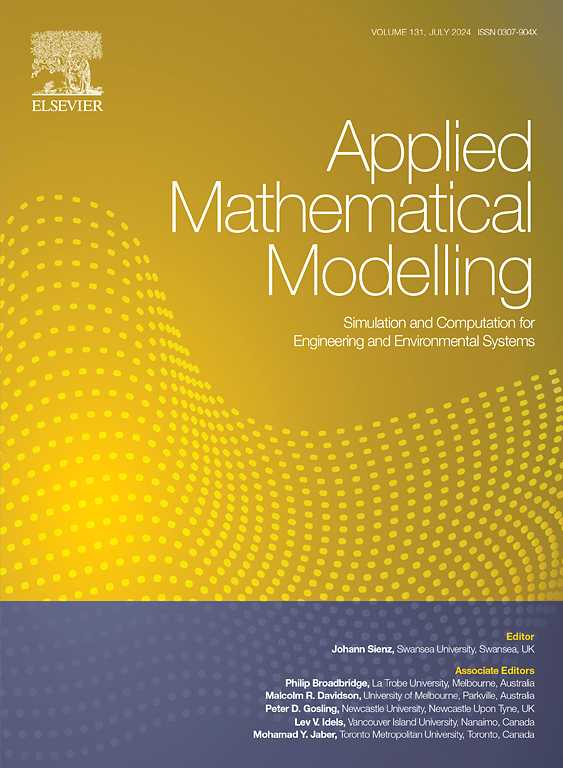Fluid-structure interaction approximation with embedded solid-shell finite elements using discontinuous shape functions
IF 4.4
2区 工程技术
Q1 ENGINEERING, MULTIDISCIPLINARY
引用次数: 0
Abstract
This work introduces a numerical framework for addressing Fluid-Structure Interaction problems involving thin structures subject to finite strain deformations. The proposed approach utilizes an embedded mesh method to establish a coupling interface between the fluid and structural domains. The novelty of the work is the incorporation of a recently developed locking-free stabilized formulation of solid-shell elements to handle the structural domain. The framework employs established techniques to handle pressure jumps in the fluid domain across the embedding interface and enforce boundary conditions, such as discontinuous shape functions for the pressure unknowns designed to segregate nodal contributions of the cut elements, and Nitsche's method for the weak imposition of transmission conditions in the fluid. The present approach is validated through a series of benchmark cases in both 2D and 3D environments, progressively increasing in complexity. The results demonstrate good agreement with existing literature, establishing the presented framework as a viable method for addressing Fluid-Structure Interaction problems involving thin structures subject to large strains.
求助全文
约1分钟内获得全文
求助全文
来源期刊

Applied Mathematical Modelling
数学-工程:综合
CiteScore
9.80
自引率
8.00%
发文量
508
审稿时长
43 days
期刊介绍:
Applied Mathematical Modelling focuses on research related to the mathematical modelling of engineering and environmental processes, manufacturing, and industrial systems. A significant emerging area of research activity involves multiphysics processes, and contributions in this area are particularly encouraged.
This influential publication covers a wide spectrum of subjects including heat transfer, fluid mechanics, CFD, and transport phenomena; solid mechanics and mechanics of metals; electromagnets and MHD; reliability modelling and system optimization; finite volume, finite element, and boundary element procedures; modelling of inventory, industrial, manufacturing and logistics systems for viable decision making; civil engineering systems and structures; mineral and energy resources; relevant software engineering issues associated with CAD and CAE; and materials and metallurgical engineering.
Applied Mathematical Modelling is primarily interested in papers developing increased insights into real-world problems through novel mathematical modelling, novel applications or a combination of these. Papers employing existing numerical techniques must demonstrate sufficient novelty in the solution of practical problems. Papers on fuzzy logic in decision-making or purely financial mathematics are normally not considered. Research on fractional differential equations, bifurcation, and numerical methods needs to include practical examples. Population dynamics must solve realistic scenarios. Papers in the area of logistics and business modelling should demonstrate meaningful managerial insight. Submissions with no real-world application will not be considered.
 求助内容:
求助内容: 应助结果提醒方式:
应助结果提醒方式:


